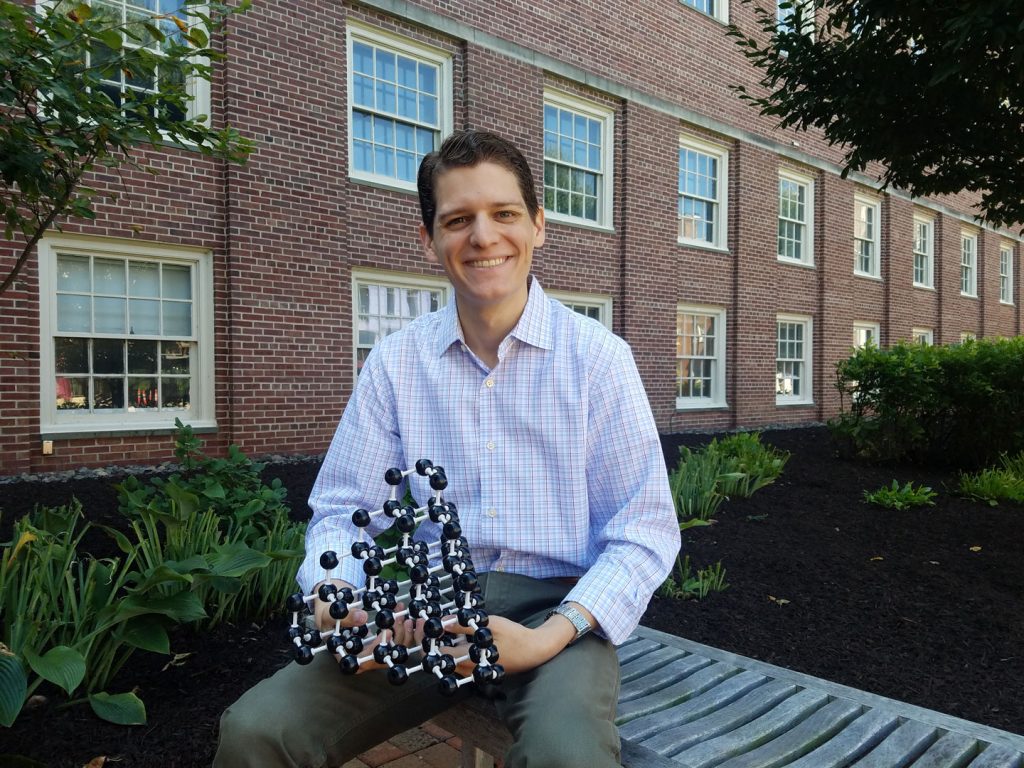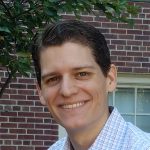What I’m teaching:
Physics to Electricity, Magnetism, and Waves; Thermal Physics
What I’m focused on:
“I grow things. I cook with the periodic table. I have a growth reactor, and I synthesize gases and I transport them down the reactor, and I grow nanowires and films. The things that I’m growing are on the nano scale—too small for the human eye to see. These are materials that we understand how they work when they are at the large scale. But when you bring them down to a small scale, quantum mechanics takes over. It might have acted in a certain way in bulk, but when you get down to a small scale, completely new phenomena show up. So part of what I’m doing is materials discovery—trying to figure out can we grow this thing and is it stable in a small scale—but also then when you grow those things in a small scale, how does it act? Does it act differently? Usually that’s the case. And so there is a whole new rich phenomena to discover that we still don’t understand—yet.”
What drew me to Lafayette:
“I’ve had very rewarding experiences in graduate school and working as a post doc with students in terms of one-on-one mentorship. It’s one of the reasons I want to be at a small liberal arts college. I was able to incorporate students into my research and get them onto the papers I was working on. If you show faith and give responsibility to students, they will surprise you and show you how capable they are. The small class sizes at a small college really appeals to me.”
What students can expect:
“I would like to bring as much engaging, hands-on material as I possibly can. There are a lot of hands-on, real-world applications that can come out of these idealistic models. And so I’d like to bring in as many demonstrations and activities as I possibly can. I think that group activity can not only change things up but also access different abilities that the students have. My goal will be to teach in a way that gets the information off the chalkboard and make it interactive. In the lab, as a mentor, I think of research in terms as an apprenticeship. I think at larger schools, you might be tasked with menial labor as an undergrad or you just check in with your prof once a month or once every two months. I like to have students working very closely with me so that they can learn from my expertise. I hope that’s inspiring to students who are still discovering what they want to do so that they can see physics in practice. And that’s what we are really trying to do: make them a practicing scientist.”

What I’m holding:
“This is an atom model, which is very much the building block of what I do. This is the structure of silicon—or diamond. They are the same thing. I am building things one atom at a time. The gases that I make, they transport generally one atom at a time. I’m building this kind of thing up atom by atom. Granted, I do billions and trillions at a time. This was a kit that I bought when I started teaching. I feel that visual aids are important. This is horrible to draw. It’s really hard to represent on paper. But having this model gives students something to engage with and look at unit cells. Being able to look at this hands-on is very helpful, especially for students who are visual, tactical learners. It brings it from the text book to real life in an approachable way.”
What’s not on my CV:
“I like to read old science-fiction novels: Jules Verne, H.G. Wells, Lewis Stevenson sorts of work. There are things that I go back to and read over and over. I’ve always liked them as far back as I can remember. I used to go to breakfast with my mother when I was 5 or 6 years old, and we would take turns reading those sorts of things.”

